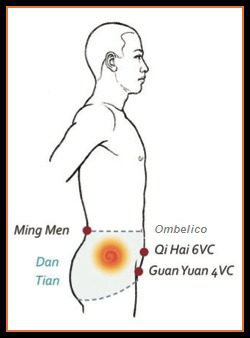I first became aware of Kegel exercises when I was in my late teens, early twenties. No doubt they came to my attention as something that would supposedly make sex better for myself and my partner, but also that these exercises were “good for me” as a preventative measure for future problems as an older woman. I don’t know about you, but as a 19 year old I was not too worried about what my pelvic floor (aka yoni muscles) would be doing when I was 50. All I knew was that Kegels were hard and boring. (I can still feel myself whining internally at the thought of doing them.) Despite my grandmother having her uterus and bladder prolapse, providing me with all the evidence I needed that poor pelvic floor strength was no joke, I was still not convinced that the energy doing Kegel exercises took was worth the effort.
Now I am 56, and I have a new perspective; not just about the value of pelvic floor strength to keep my parts inside me and postpone the need of adult diapers, but that my pelvic floor and lower Dantian is the core of the matter – it’s what upholds me, it’s where my super power lies, and it has a huge impact on how I feel about myself as I move through the world.
I didn’t fully appreciate the value of having a strong core until my body provided me with the incentive I needed (aka pain), and I made the connection between that area and my spiritual energy. Somehow it wasn’t enough for me just to be stronger in body, I needed to be working toward a stronger spiritual energy as well. Building my core strength through a series of pelvic floor exercises combined with Kundalini yoga practices has cinched it all together for me and is contributing to a renewed sense of strength – physically and spiritually, as well as a sense of uprightness and vitality. I want to hasten to say that I am by no means a kundalini yogi – but I have been learning breathing techniques and postures from Jai Dev Singh and combining them with core exercises from Peggy Brill’s book The Core Program to create a unique practice which has been transformative for me. (Caveat – I recommend Peggy’s book to many of my clients as I have found her exercises to be very helpful, but I want to say that I am not a big fan of her writing style.) I won’t go into these core exercises in this blog, but I encourage you – if you haven’t already adopted a Core or Pilates program – to explore and integrate these types of exercises into your self-care routine. The benefits are far more than relieving back and hip pain and holding your pee in; you’ll feel strong, stable and upright which supports your chi in flowing freely and your light to shine.
The lower Dantian is located between the pubic bone and navel, and is the center of gravity in the body. Translated as “Field of Elixir”, it is an area where we can generate and consolidate our chi, and where YinYang has the potential of holding perfect balance. When we cultivate a relationship with this core and develop the ability to center ourselves there at will, our actions come from a grounded and powerful place.
Breathing from the Dantian
When we place our attention on the lower Dantian and allow our belly to soften and expand with each inhale, the diaphragm flattens out and makes room for the lower lungs to fill with air. (Shallow breathing only fills the upper lobes of the lungs with fresh air and also doesn’t fully eliminate carbon dioxide from the lower lungs upon exhaling.)
To practice this, place your hands on your Dantian, and take in a deep breath, intentionally expanding your belly to gently raise your hands. Pause slightly at the top of your breath, noticing how your lower ribcage expands to the sides as you’ve inhaled. Release your breath, and at the bottom of your exhale gently contract your belly, pulling your navel toward your back, fully expelling the oxygen from your lungs. Repeat this gentle belly breathing for a few rounds paying attention to how it feels.
After several times of the gentle belly expansion, shift your process so that at the top of the inhale you hold your breath and really push your lower belly out against your hands (put some effort into it). This will intensify the contraction of the diaphragm, holding the lungs in their expanded state, penetrating the oxygen in your lungs deeply into the cells.
Then as you exhale, contract your belly as hard as you can, firmly pulling your navel back toward your spine. This motion uses the transverse abdominal muscles to compress the abdominal organs and lift the diaphragm which pushes all the air out of the lower lungs. Repeat this process several times, and end with a minute of natural breathing.
Root Lock
To strengthen the muscles of the pelvic floor while simultaneously consolidating energy and developing the Dantian power center, do what the Kundalini yogis call a “root lock” (aka Kegel). Feel into the area of your Dantian being activated just above the pubic bone.
Root Lock
- Take a deep breath in and hold it.
- Contract the rectum and sex organ, pull the navel in and up, hold tightly and count to ten.
- Keep your attention focused at your third eye (the space between the eyebrows) while you hold your breath and squeeze.
- Exhale the breath and release the root lock simultaneously.
- Repeat at least three times.
- Practice this several times throughout the day.
The more attention you place on your Dantian and the more developed it becomes, the quicker you can center yourself there and draw from its strength. When your words and actions are rooted in the Dantian they carry more power and are more effective than if they are coming from the higher, airier parts of the body. In the face of a world gone mad, it’s good to know how to access the Field of Elixir, the bedrock of your vitality and the core of your matter.


